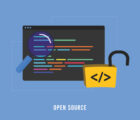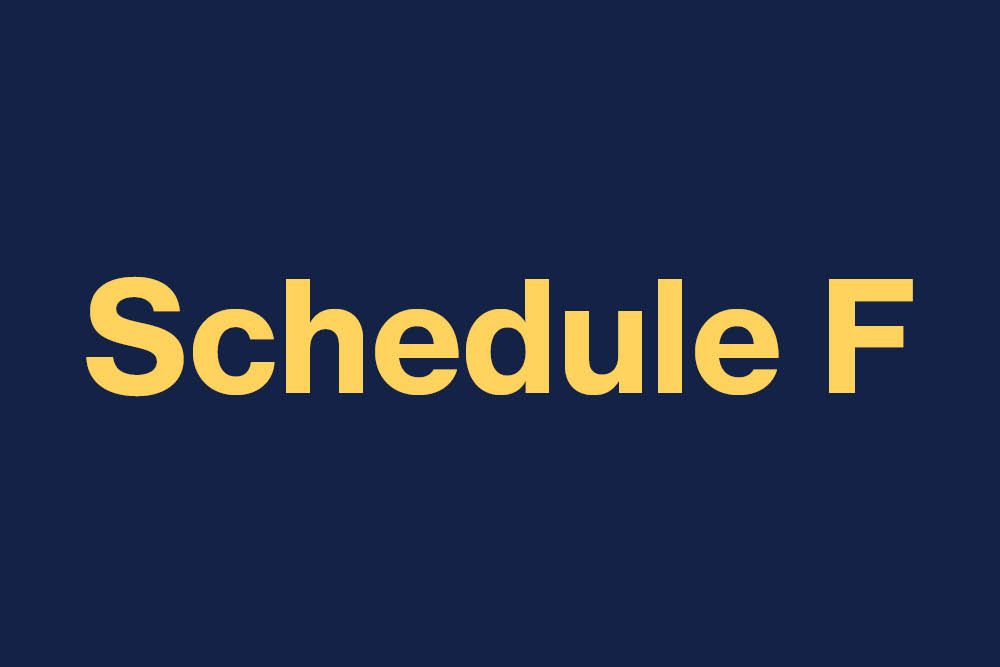Grover Edie is a “seasoned actuary,” who started in the insurance business in 1972.
His son, Wil, began his career at an insurance company in 2013 as an actuarial analyst.
When Wil decided to enter the actuarial profession, the father and son’s conversations took on a different twist. With this being the CAS Centennial Year, they thought it would be informative to share some of their dialogue with others. They hope you find it educational, enlightening, entertaining and possibly humorous.
This series of topics centers on the difference between Grover and Wil Edie’s observations of the beginnings of their careers as actuaries. The elder Edie provides running commentary in italics.
How We Discovered the Actuarial Profession
Grover: I was about to graduate college with a degree in physics. This was when NASA was laying off Ph.D.’s in physics — all that degree gave one was the opportunity to be a very educated gas station attendant. I was going to get married after I graduated, and my future father-in-law, your grandfather, told me that insurance companies used people who were good in math. He arranged for me to meet his cousin, Holland “Hod” McIntosh, in Kansas City. Hod was a vice president for Employers’ Re. He introduced me to his view of the world of insurance, and I found it interesting. He also introduced me to their chief actuary, who told me what an actuary did, and how I should go about getting into the profession. (Exams were the key back then as well.) Hod’s company did not have any openings at the time, so he suggested that I get a job in insurance as a claims adjuster or an underwriter while I took some actuarial exams and waited for an actuarial opening to come up. I landed a job as an underwriter in Oklahoma City, and my career in insurance began. Two years later, I accepted a job as an actuarial analyst at ISO in New York City.
Wil: Dad, you might recall that when I was four or five years old I had a shirt that said, “My Dad’s an Actuary.” When I wore the T-shirt, I got tired of the questions from strangers about what an actuary was, so I just told people my dad did math for a living.
I did more reading into what actuaries do and was surprised at the variety of work credentialed actuaries do. The common thread was using objective reasoning to solve complex problems. —Wil Edie
It wasn’t until I went to college and took some personality tests at the career center that I thought about becoming an actuary myself. It came up on all of my results as a job that I might enjoy. I asked you what you really did for a living and whether or not I might enjoy the work. After some thought you told me you believed I would. I did more reading into what actuaries do and was surprised at the variety of work credentialed actuaries do. The common thread was using objective reasoning to solve complex problems, something that I liked to do. Being able to communicate those solutions to a variety of audiences adds to the problem-solving nature of the work. I graduated from my university’s actuarial science program with a major in mathematics and a minor in risk management and insurance.
Comment: In the 1970s, there were very few colleges or universities that offered degrees in actuarial science. Most actuarial analysts started in another major. Today, most university placement departments know of the profession and many colleges and universities offer majors in the field.
How We Got Our First Jobs
Grover: The Oklahoma Checking office, a branch of ISO, was located above my employer. (At that time, companies had to have an outside office check their property insurance contracts for proper use of rates, rules and forms, hence the “checking office” title.) They offered to have me take an “actuarial aptitude test,” which was like taking the preliminary Exam P/1. This was a common practice then. I must have passed, because after they sent my test to the New York office, they invited me to fly up and interview with them. They made me a job offer, even though I had not passed an actuarial exam. I accepted the offer, and your mother and I were off to the Big Apple.
Wil: As you know, my first job was an internship during my junior year in college in the corporate actuarial services department of the American National Property and Casualty Insurance Company. After graduation I was hired on at Horace Mann Insurance Company in Springfield, Illinois to work in the product administration department. Competition was pretty fierce for positions as the majority of employers I spoke with wanted graduates with two or more exams and at least one internship, sometimes more. I had one exam and one internship, so I was probably in the middle of the pack when it came to experience, but I was behind a lot of my peers when it came to exams.
Comment: In the 1970s college students did work during the summer for insurance companies. The programs were not as formal as they are now, nor offered by many companies, but the work did provide valuable experience for the students. It also enabled the company to evaluate the student for possible employment after graduation, while getting some needed work completed.
Studying for Those First Exams

Wil, the future actuary, sports the infamous “My Dad’s an Actuary”
T-shirt. Wes, the “white sheep” of the family, is now a children’s pastor in
Milwaukee and juggler of machetes and lighted torches.
Grover: When I took Exam P/1 (called “Part 1” at the time), I failed it the first time. I decided I needed help, and I had found out about a Canadian correspondence course for the exam. I did the lessons, but part way through my studies the Canadian Postal Service went on strike and I was not able to finish the course. At the time, I think there were two “sample exams.” I accepted the job at ISO at about the time I took Exam P/1. I learned I had passed on our way to move from Oklahoma City to New York City by calling from a land phone line. This was before cell phones and before the Internet.
Wil: You will recall that I didn’t fare so well on my first exam either. I took the college course that covered half of what was on Exam P/1 and aced everything, but when it came time to study for the exam itself I was woefully unprepared. I put in about 40 or 50 hours doing practice problems and covering the ACTEX manual, but it just wasn’t enough. I sat for Exam P/1 again the next sitting and this time I put in about 120 hours and used both the ASM and the ACTEX manuals, but I still didn’t have the depth I needed on the harder material and failed with a 5. Since I wasn’t having any luck with Exam P/1, I skipped ahead and took Exam FM/2 later that year (I figured that maybe it would be easier, and for me it was — I passed on the first attempt). The third time I attempted Exam P/1, I put in over 140 hours and focused on just practice problems. I studied some of the topics I was struggling with, but spent 80% of my time just punching out practice problems. That time I passed with a 7, and I began to see that there was a strategy behind studying for the exams.
I began to see that there was a strategy behind studying for the exams. —Wil Edie
Comment: Talk about big changes! ACTEX started in the early 70s. Online coaching and multiple sample exams did not yet exist then. The Internet and the sheer number of candidates taking exams have vastly changed exam preparation — and the study aids are available on your Smartphone or your tablet.
Progressing Through Subsequent Exams
Grover: When I took them, Exams 2, 3, 4 and 5 had textbooks. At ISO, those of us taking the same exam would study individually, but would get together in the morning to discuss what we had studied the night before. We got copies of old exams when we could, but that was about it.
Exams 6 and beyond had some textbooks, but for the most part the study materials were a collection of Proceedings papers. We started studying by spending hours at the photocopier making copies of these articles from borrowed Proceedings. If we were studying in a group, we split up the copying chores.
Wil: Of course, I haven’t hit the upper levels yet; I’m working on Exam 4/C right now. The preliminary exams are fairly straightforward as I said before.
However, I managed to take the exams in just the right time to be a part of the changes to Exam 3. Prior to 2014, Exam 3 was made up of two parts: 3F and 3L.
After talking to several actuaries it sounds like syllabi changes are not all that rare, and that rolling with the changes to the general syllabus is just one more step that most actuaries go through. Since the field changes rapidly with advances in technology and the industry, I understand the need for changes, but I was thrown by having to change my mind set.
Comment: The CAS does a good job at keeping its examination materials (and exams) current. I dealt with syllabus changes as I was going through the process. When I started, there were nine exams: by the time I was approaching my Fellowship, there were 10. My nightmare was that when I passed my tenth exam, the CAS would add another. Fortunately for me, they did not.
The Hows, Wheres and Whens of Taking Exams
Grover: All of the exams were paper and pencil. Exam sites were few and far between. Fortunately, in New York City, where I worked early in my career, there was always an exam site. It took about six weeks for you to get the exam results by (paper) mail. The only way you could even guess how you did was to compare your answers to those of others with whom you studied.
Exams P/1 and two other “preliminary exams” were offered twice a year; the higher exams were offered once a year.
Wil: Now, some exams are offered multiple times a year, with SOA Exam P/1 offered six times a year. The exam frequency actually makes studying a bit tricky, though. For example, I passed Exams ST and LC in April 2014 and sat for MFE in July 2014; I had to wait until February 2015 to sit for my next exam which was a welcomed, but long, break. The staggered timing of the preliminary exams is more complicated than the timing of the upper levels, but the increased frequency does make taking them easier when still in school, or if you have to retake the same exam.
Comment: As interest in the profession has grown more exam locations are available now. Several exams are taken on a computer and the preliminary evaluation of pass/fail is provided as you leave the site.
Workplace Technology and Its Many Changes
Grover: At ISO, we had a time-sharing computer. Output was on green bar paper and printed overnight. You signed up for computer time. The input terminal looked a lot like a typewriter keyboard on a stand, with one addition: the programs were keypunched into ticker tape — a yellow ribbon of tape with holes in it — so you could “save” your program. Computers were kept in specially sealed rooms with floors raised to handle the wiring and to provide cooling for the computers. Disc drives were about the size of a washing machine.
In the early days, we would use slide rules for exponential trends.
Calculators were new, and I didn’t even get one until I had been with the company a few months. When I did get it, it was about 16 inches wide, eight inches high and about 16 inches deep. It was a “four banger,” meaning it added, subtracted, multiplied and divided. Its display was a series of “nixie tubes” (Google it), and it produced enough heat that we used to dry our gloves on the top of the unit in the winter time. Filings with the states were done by paper. The files were all paper. “Portable storage” was a punch card.
“Portable storage” was a punch card. —Grover Edie
Phones used land lines and took up a lot of desk space.
Wil: We use paper every now and then for reports and meetings, but for the most part everything is electronic. Filings are done on SERFF (System for Electronic Rate and Form Filing, an online website companies use to file rates, rules and forms with the insurance departments). All of our files are available on shared drives or our intranet. Frequently accessed data is stored in data cubes accessible via pivot tables from a server and other common data is stored in Access tables. Reports are generated not on paper but virtually, with recall being nearly instantaneous. And importing them into spreadsheets or tables takes no time at all.
Grover: I remember seeing a fax machine for the first time in the mid-1970s. That technology has come and gone! I never thought a portable phone would work (something your mother reminds me of occasionally) but now my smartphone also has my contacts, my calendar, and multiple email accounts. We have “face-to-face” conversations using video technology over the Web, and transfer files of all sorts electronically and almost instantly.
The U.S. Postal Service likely suffers from the proliferation of emails which not only replace paper, but do it quicker. (On the down side, we now get spam! Spam and email were not even heard of when I started out.)
Comment: The time actuaries no longer spend doing calculations can be spent on doing a better job of analyzing the results and looking at alternate scenarios and solutions.
Templates: A Trick of the Trade

Grover: Templates were copies of typewritten sheets of paper that helped you through the calculations by filling in the numbers. We used them for finding out the trend for a series of values, for example. Complex calculations simply took too long, because the actual calculations were done with a calculator as we filled out the numbers for the interim steps. Someone checked the work by repeating the process and placing a pencil check mark by each number verified.
Wil: We also use templates to complete some recurring reports and to perform rate reviews. These consist of Excel workbooks linked together and data connections or tables are used to drop in the newest data. Regressions for trend analysis are simple now, since not only can Excel run them, but macros can be built to run as many regressions as you want. Once a template is built it’s as easy as clicking a button to update the models.
Comment: Templates are classic tools with surprising staying power. PCs and their software have enabled templates to go from paper to program. Many of the templates, such as the ones to determine the mean, variance, a fitted line, and more have been replaced by functions within the software itself. Much rote work has been replaced by automation, giving more time for analysis.
Dreams Do Come True — New Tools for the Industry
Wil: In this age of computers and big data, we have all kinds of ways to verify risks and make sure that we are offering coverage to the risks that we are agreeing to; we can access motor vehicle records to verify driving records, verify losses using industry reports prior to binding, and get another look at a property using Google Maps. Other organizations such as the Highway Loss Data Institute and LexisNexis offer industry data to complement what our data can provide to us. Access to mapping software allows a different look at rating variables, territorial data, property losses and even agency locations. These data add credibility in areas where our own experience is sparse and allow us to be priced more in line with the competition, even when our data is insufficient for proper analysis.
Grover: Of course, with these advances comes a cost: a lot more data to examine and a lot more options to consider. The actuary’s work did not get easier; it just changed in scope.
Stability in the Midst of Change
Grover: A lot has happened in the 40 years since I got my start. Technological advances have made possible what actuaries in the 1970s only dreamed of being able to accomplish. Materials are much easier to obtain today — from exam materials to data — which can pose a whole different set of challenges. Less time spent gathering exam materials does not mean less time in preparation because the competition to pass exams is still intense. Companies are using all sorts of tools to set rates as precisely as possible. The actuaries have entered the financial world with capital modeling and similar activities. There were 518 members of the CAS in 1972; now we have more than 6,000 members. As our membership has grown, so have the arenas in which we work.
Even though 40 years have come and gone, bringing many changes, some things are constant. The educational processes, the wealth of our knowledge spread through our writings and meetings and, most importantly, the wisdom we share among ourselves through our community remain our greatest
assets.













